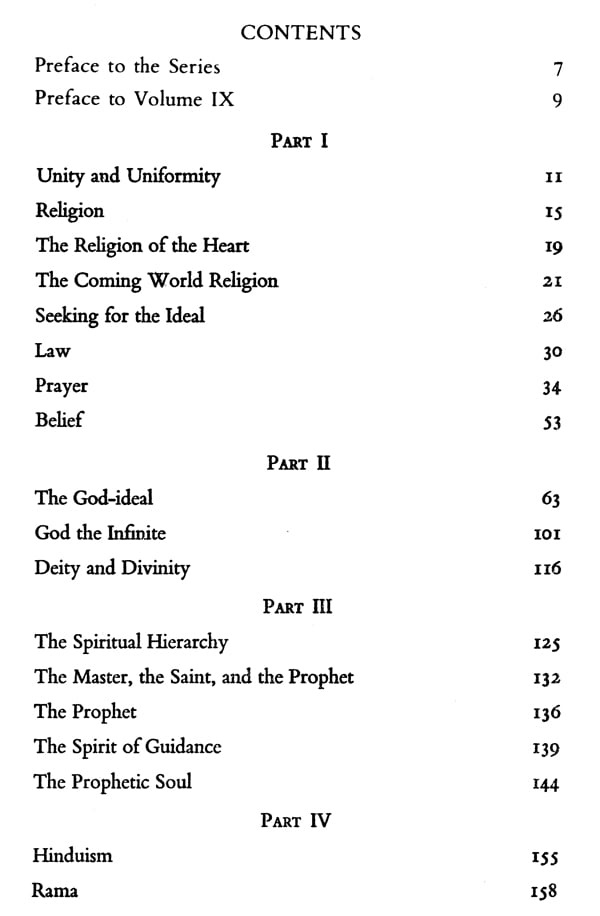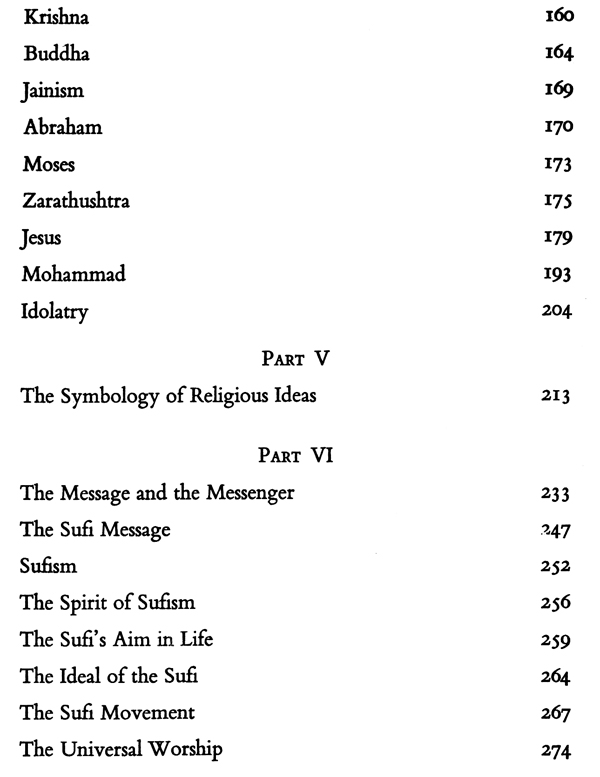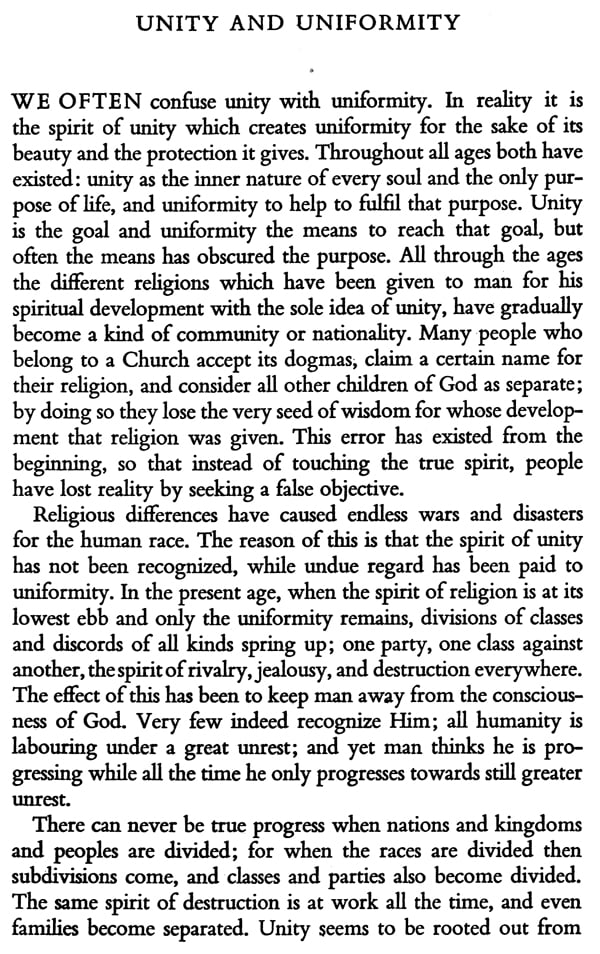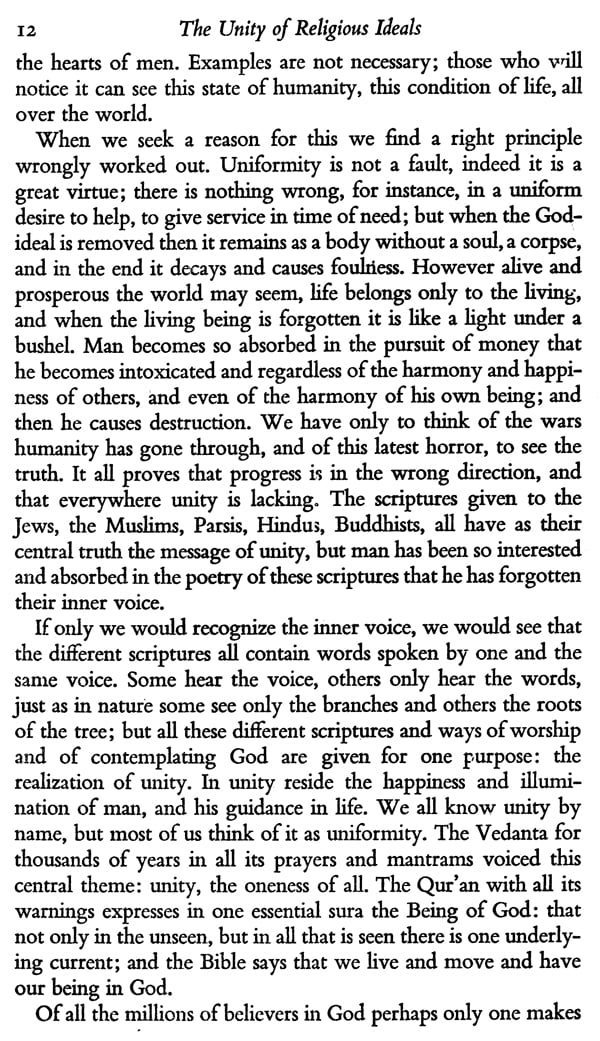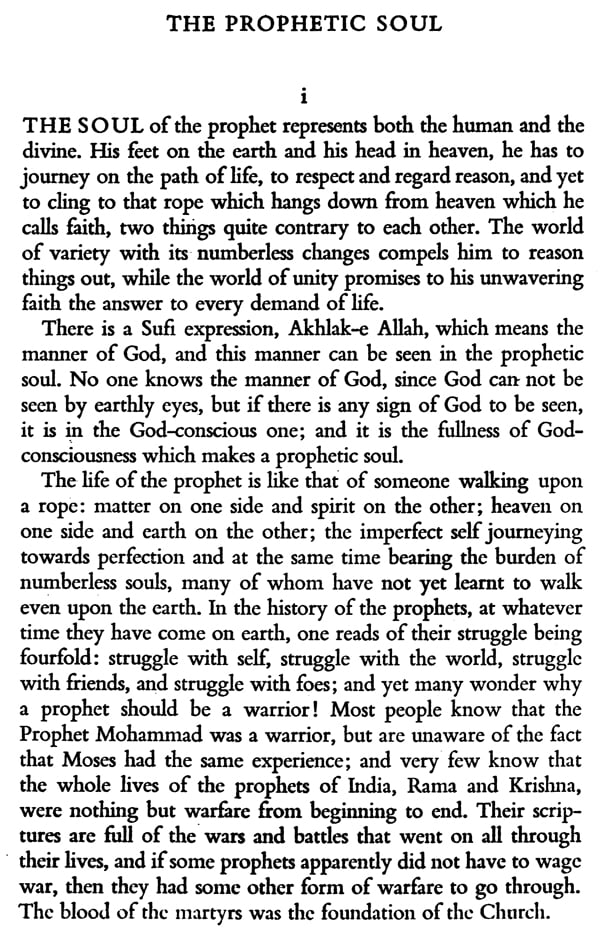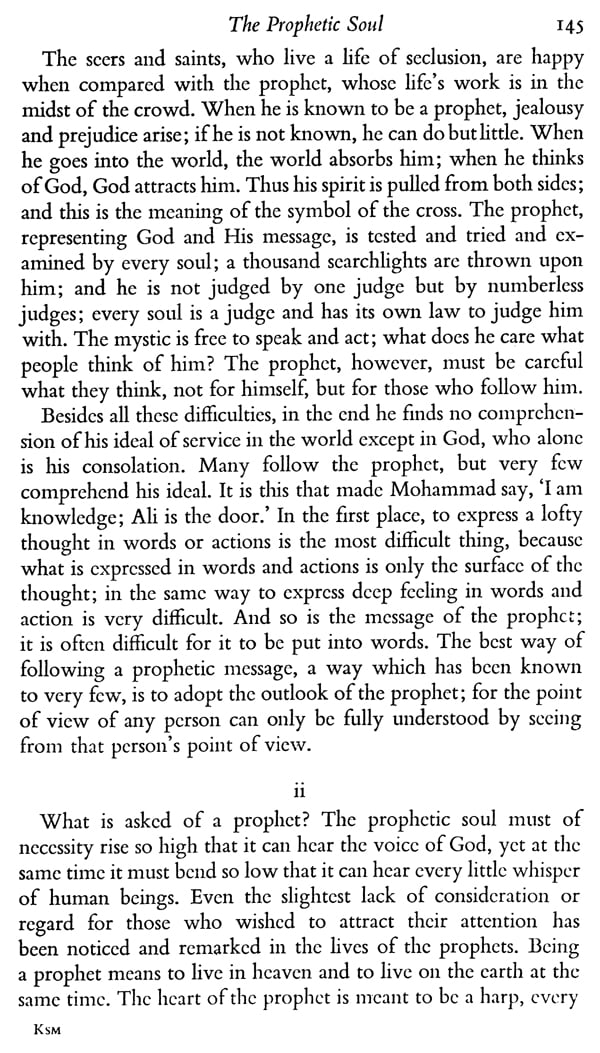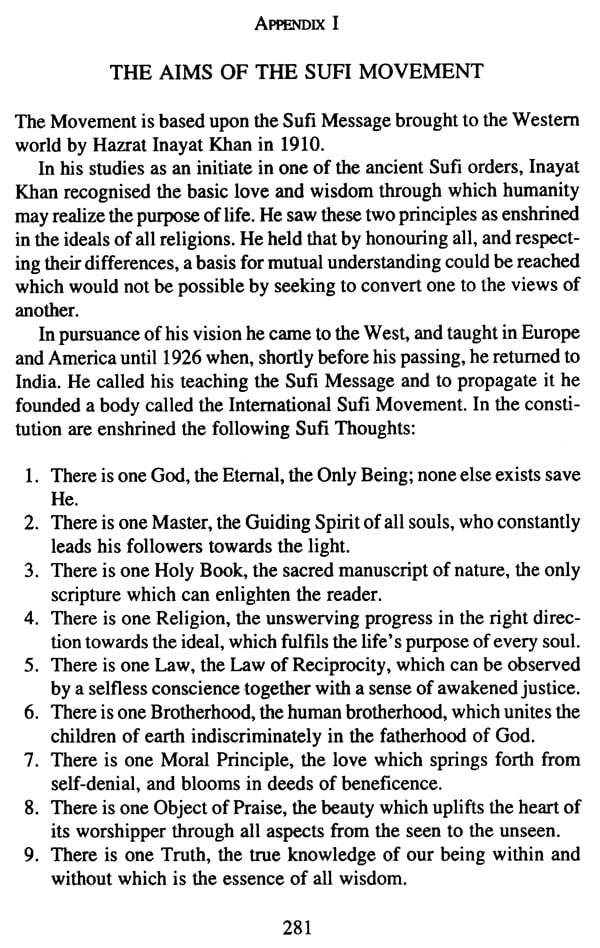
The Unity of Religious Ideals - The Sufi Message (Vol- IX)
Book Specification
| Item Code: | NAT783 |
| Author: | Hazrat Inayat Khan |
| Publisher: | Motilal Banarsidass Publishers Pvt. Ltd. |
| Language: | ENGLISH |
| Edition: | 2018 |
| ISBN: | 9788120806887 |
| Pages: | 296 |
| Cover: | HARDCOVER |
| Other Details | 9.00 X 6.00 inch |
| Weight | 500 gm |
Book Description
This invocation by Hazrat Inayat Khan represents the truth behind this book, in extremely subtle and meaningful words.
The Unity of Religious Ideals may lead you straight on the path to your ideal, discover for you the religion, in whatever form it may appear, waken in yourself the longing for the Light and the Goal, and thus you may find the Self, as a Pearl hidden in the shell of your heart. In six parts the whole field of religions is covered from the point of view of the mystic, the philosophy of religion, the concept of God and the God-ideal spirit of guidance and the spiritual hierarchy: than various religious and messengers are discussed, followed by a presentation of some religious symbols and their explanation. Finally, the concept of the divine message is presented, followed by an exposition or the role of universal Sufism, and what contribution it can give to the development of the individual and of humanity at large.
All Religions are essentially once; since there is only one God and one truth it cannot be otherwise, This is one of the principal tenets of Sufism, and is one of the most important element of Hazrat Inayat Khan’s message.
All Religion are essentially one. There is only one God, there is only one Truth.
These two statements form part of what really is a strong mantram or wazifa: there is one God, there is one Master, there is one Holy Book, there is one Religion, there is one Law, there Brotherhood, there is one Moral principle: Love; there is one Object of praise; Beauty, there is one, Truth, there is one Path (P. 267)
This book may be considered an elaboration of the religions of this ‘Song’. It is in the understanding and respecting of one another’s religions ideals and ideas, in trying to look for resemblance and only rather than for the difference and distinctions, in finding the common denominator of and the life-giving force behind the various religions and their scriptures that the remedy for many of the world sills is to be found.
Religion is one of the most important aspects of life yet it has been misused more often than not. In this new era of communication and knowledge with a rising consciousness that we need one another, and that above all we need the life-giving force, we may give religion its due, and take care it frees rather than oppresses, inspires, rather than depresses, lightens our burden rather than increases our moral load.
Part I presents the religious philosophy of Sufism and the role of religion in the of the individual and that of the community.
The concept of God is essential for religions. Even important is for the individual; unfortunately, very often w hen religion had become more formal than life; it can, however, also lead man to utter happiness, freedom and enlightenment. This is the theme of Part II, the God ideal.
Religion has come to mankind through human beings: masters, saints, prophets, and also through the Spirit. Hazrat Inayat throws new light on many aspects of this phenomenon in Part III.
Part IV discusses the various religious and messengers, showing their wide variety and essential unity, the papers in this section put forward the truth in the behind all forms, explaining their origins and meanings. No form, dogma is rejected, but rather put in a new (or very old, eternal) light by which its value is enhanced whilst at the same time appearance and wording are shown to be not so important. The same goes for Part V in which the symbology of religious is discussed on the basis of some selected examples.
Part VI is a beautiful culmination of the book in which first the essentials of the divine message and the being of the message are explained. Then the role of universal Sufism is discussed in some seven chapters, and what contributions it can give to the development of the individual and of humanity at large.
The book may be welcomed as a comprehensive survey of the religious aspects of Sufism; it may serve as a guide for those who, being interested in Sufism, wish to know more about the Sufi’s attitude towards his own or other religious.
**Contents and Sample Pages**
